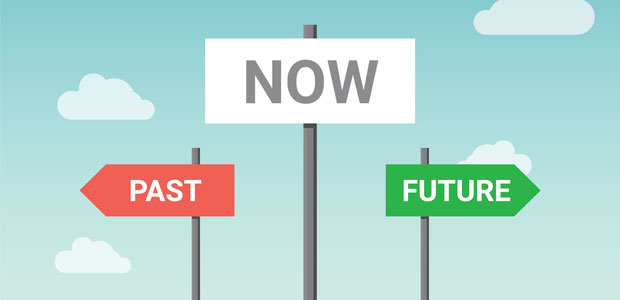
The past, present and future - embracing change
Admitting we have biases is not easy. It makes you question how much control we have over our minds and behaviours. This year’s International Women’s Day (IWD) theme encourages us to ‘Break the Bias’ to achieve gender equality, but it is difficult to know which biases are the most important ones to ‘break’ first.
A bias, illusion or an effect is an unconscious tendency towards or against something or someone. But that doesn’t change the vast number of positive and negative evolutionary programming we have embedded in our subconscious.
When we recognise our own biases, we can make a dramatic shift.
I had always been reliant on popular navigation apps to move around new cities, which, at that time, London was to me. Why would you follow an app if you weren’t sure it would get you there in one piece? However, it became apparent that my assumptions were an illusion, after following one such route.
I trusted the route using Google Maps to meet a friend for dinner but quickly found myself cornered in an alleyway with two kitchen staff who blocked my passage and threatened to sexually assault me. Luckily, they eventually let me go, but I couldn’t let go of how the technology ignored the realities of being a woman and the risks of violence that can happen anywhere when travelling through a city.
I couldn’t ignore the fact that many other women would follow that route, even that same night. How many more women would those men confidently threaten? How many times before their threats became real or even worse?
These apps had no way to facilitate or empower my sense of safety; they ignored it. Why wouldn’t these technologies help me and others understand what we were walking into, get help or make our experiences visible to help prevent others from walking into trouble? My biases and those embedded into these technologies clearly were not designed with women in mind.
And that was the catalyst for me to launch my technology company, Safe & the City. On IWD in 2018, we launched a mobile app to help people navigate through places with safety in mind. We crowdsourced people’s experiences to continuously inform and learn how to create safer, more inclusive spaces.
The author of Invisible Women, Caroline Criado Perez, has made more of these hidden biases visible. She highlights how the design of most of our digital and physical products, transport, and nearly all other systems have missed more than half of the population. Women being invisible in these systems perpetuates gender inequalities and can feel impossible to change.
But this wasn’t the only bias along my journey I would break. Everything changed when I decided to leave my academic post as a public health professional to become a social entrepreneur.
Disrupting my life’s status quo forced me to confront more unconscious assumptions and discover a new way of thinking. Psychologists have long established that it is human nature to believe our ‘here and now’ state will remain roughly the same in the future, otherwise known as ‘End-of-History Illusion’. In essence, our brains are programmed to see the present day and predict its similar state for the next decade. It is easier to remember who we once were than imagine who we might become. Of course, it’s impossible to predict the future, but psychologists have evidenced that we constantly underestimate how many changes will happen at every single age.
Think back - who were you ten years ago? How much did you believe gender equality would have progressed? I thought being a woman carried a risk of violence everywhere I went. There was little I could do to stop it, except by taking on more responsibility to try and prevent getting into a risky situations.
If you have this view of the future, it’s hardly surprising that our society also has the same collective End-of-History Illusion. We need to look no further than technology to inspire how much the last decade, the last three years or even the last few months have radically changed our lives.
It’s not much more than ten years ago when most of us didn’t have a smartphone, social media accounts or work remotely - now all those things we see as normal. Technology has accelerated changes beyond our imaginations, but we have yet to truly embrace how it can be applied to improving women’s rights and safety issues.
Technology may help us break this bias on how much can change, but we also need to push it further to embrace it as a powerful tool to unlock many more possibilities and accelerate changes needed to reach gender equality.
My hope is to inspire how technology can be applied to drive social good, design safety solutions with women in mind and advance change much further than we’re programmed to think.

